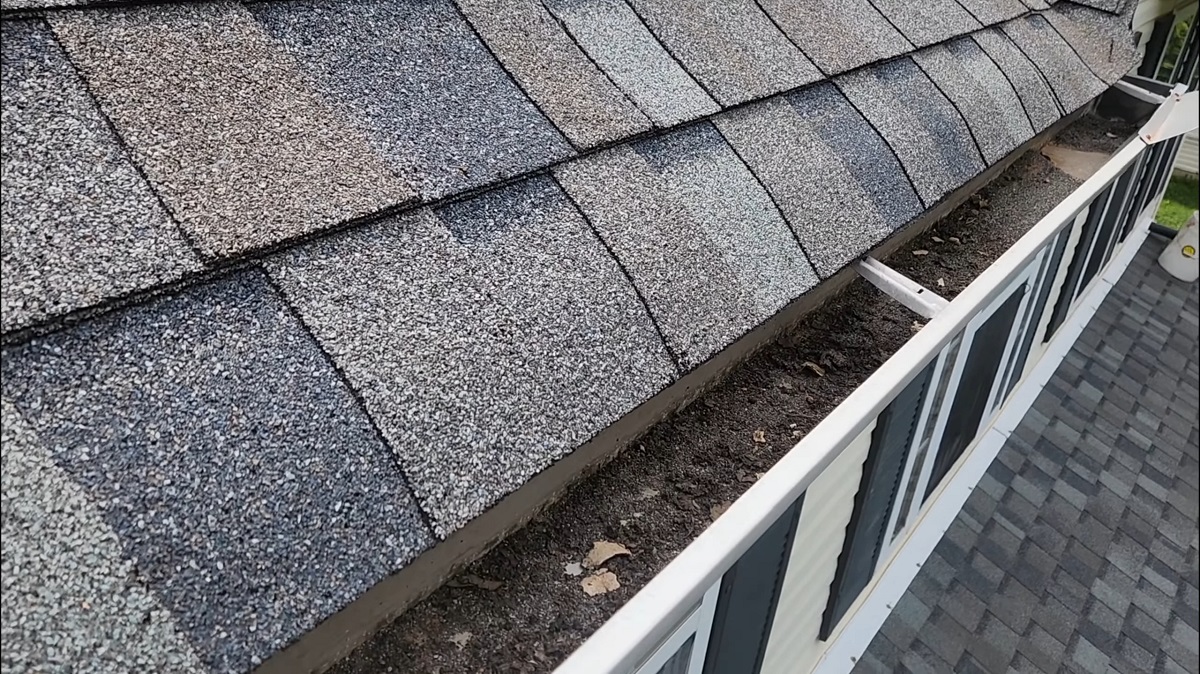Gutters might look like a simple piece of metal or vinyl running along the edge of your roof, but they quietly carry out one of the most important jobs in home protection.
They catch and redirect rainwater, preventing it from pooling around your foundation or seeping into walls and basements.
When they clog, the problems start small: peeling paint, a little overflow, but they can quickly balloon into thousands of dollars in water damage, mold growth, or even structural issues.
On top of that, climbing a ladder with a bucket and a pair of gloves is not nearly as harmless as it seems. Every year, hundreds of thousands of people are injured doing exactly that.
Add in electrical lines, slippery roofs, and the unseen health hazards hiding in wet gutter debris, and you start to see why professionals treat gutter cleaning as a specialty job, not a weekend chore.
Today, we will lay out why tackling gutters yourself often adds risk without real savings, and how trained professionals do the work more safely and effectively.
Key Points
- Clogged gutters lead to costly water damage, mold, pests, and even fire risks.
- Ladder falls, electrical lines, and biohazards make DIY gutter cleaning dangerous.
- Professionals use safety gear, proper tools, and inspections that prevent bigger issues.
- Regular cleaning (at least twice a year) protects your foundation, roof, and wallet.
What Gutters Actually Do, and Why They Matter
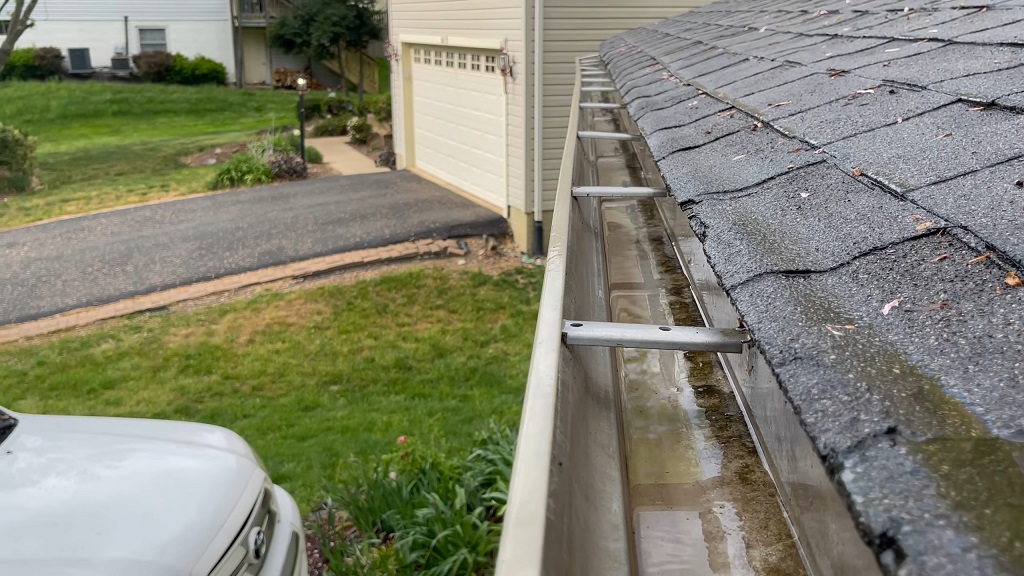
Your gutters handle thousands of liters of stormwater every season.
Instead of spilling down your siding or pooling against your foundation, that water is carried to downspouts and safely discharged away from your home.
When they clog, the whole system fails.
Why clogged gutters cost more than you think
- Foundation and basement issues: When soil around your foundation stays saturated, water finds its way inside. Even small leaks can ruin finished basements or lead to foundation shifting.
- Rot and mold: Overflowing gutters push water behind fascia boards and soffits, where wood begins to rot and hidden mold thrives.
- Ice dams: In cold climates, clogged gutters create ice dams that force water under shingles, leading to roof leaks.
- Pests: Standing water is a perfect breeding ground for mosquitoes. Public health agencies emphasize clearing gutters as part of mosquito control.
The U.S. Insurance Information Institute reports that about 1 in 60 insured homes files a property damage claim from water or freezing each year, making it one of the most common and costly homeowner claims.
FEMA notes that even an inch of floodwater in a house can cause around $25,000 worth of damage. That’s the cost of ignoring what looks like a small overflow at your eaves.
Downspouts and proper drainage
It’s not just about the trough at your roofline. Building guidance from the U.S. Department of Energy and many municipal stormwater programs recommends that downspouts discharge at least five feet from your foundation.
In areas with clay soil or on slopes, you may need even more distance to prevent basement seepage.
The Risks Homeowners Overlook
Plenty of homeowners think: “It’s just a ladder, what’s the harm?” The reality is that the hazards of gutter cleaning are well-documented, and they don’t stop at falling.
Falls from ladders
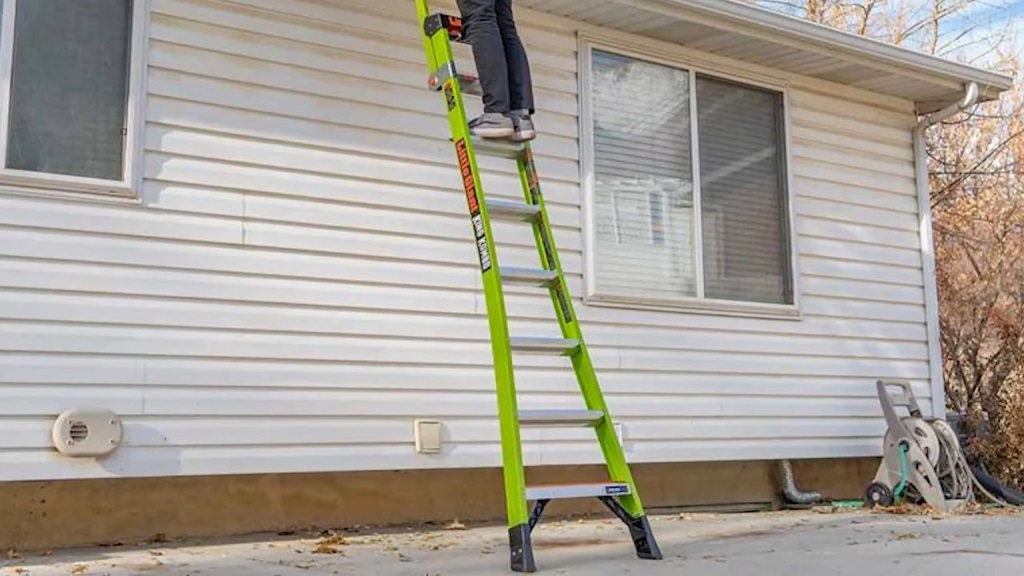
According to CDC:
- More than 500,000 ladder-related injuries are treated in the U.S. each year.
- Around 300 people die annually from ladder falls.
- The estimated economic burden of ladder injuries is $24 billion when you factor in medical care, lost wages, legal costs, and more.
- Many fatal falls happen from heights under 10 feet, the same range as most single-story home eaves.
Professional crews are trained to use stabilizers, maintain three points of contact, and set ladders at safe angles. Homeowners often skip those steps in the rush to “just get it done.”
Electrical hazards
Most homes have overhead service lines near the roofline. OSHA’s guidance requires keeping at least 10 feet away from any live line unless the utility has de-energized it.
Wet tools, long ladders, and even the debris itself can conduct electricity. The risk of electrocution is real when cleaning gutters near those drops.
Fragile roof surfaces and skylights
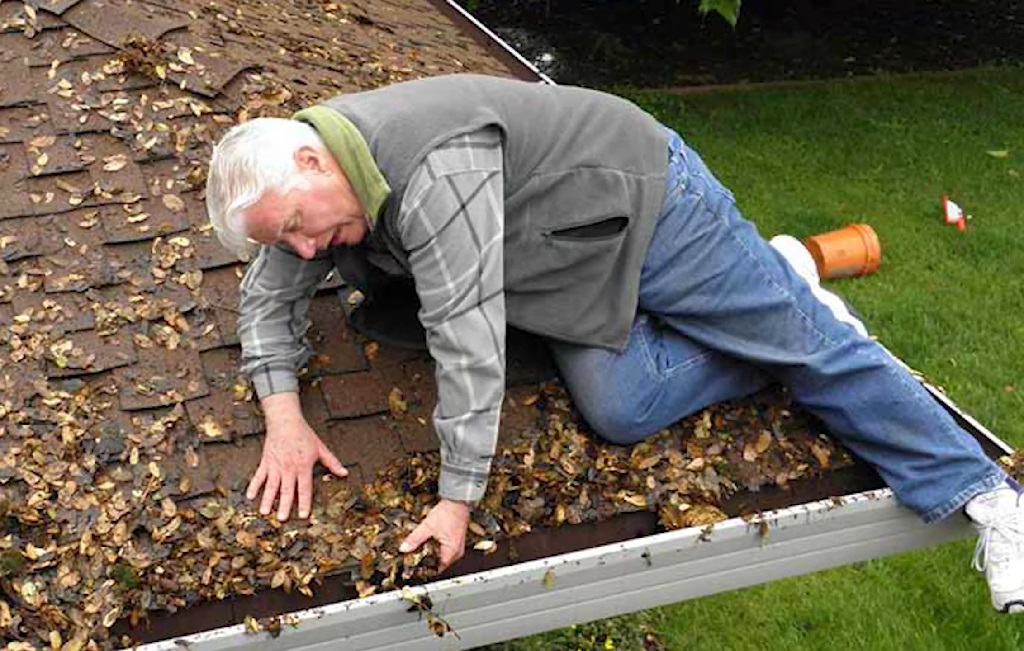
Walking on a roof might feel solid, but skylights and brittle shingles are common hazards. State and federal safety investigations regularly record falls through skylights during maintenance.
Even if you don’t fall, walking on shingles strips protective granules, which can shorten the life of your roof.
Biohazards in debris
Decomposing leaves mixed with droppings from birds or bats can contain Histoplasma, a fungus that causes histoplasmosis. The CDC warns that aerosolized spores are a risk when dry debris is disturbed.
Professionals use dust suppression and protective gear, while DIYers typically scoop with bare hands and little more than a mask.
Wildfire fuel
In dry regions, gutters packed with leaves become tinder. The IBHS emphasizes clearing gutters to reduce ignition risks from embers. Even homes with gutter guards are not immune-debris on top of covers can ignite just as easily.
Why Hiring a Professional Makes Practical Sense
It’s not about convenience. Professional gutter services bring training, specialized equipment, and safety protocols that lower the risks and extend the life of your system.
What trained crews provide
View this post on Instagram
- Proper ladder equipment: stabilizers, levelers, and stand-offs sized to the eave height.
- Fall protection habits: three-point contact, safe angles, and restricted reach.
- Electrical awareness: job planning that maintains OSHA-recommended clearances from lines.
- Health protocols: PPE, dust control, and proper disposal if droppings are found.
- Technology: many companies use vacuum systems, camera inspections, or ground-based tools that limit time at height. Local providers (if you live in Australia, for example), such as Gutter Cleaning Sydney, offer these advanced methods as part of routine service.
The value of trained eyes
Beyond clearing leaves, technicians spot:
- Sagging gutters or back-pitch where water stands.
- Separated seams and pinholes leaking behind fascia.
- Loose hangers ready to fail under the next heavy rain.
- Downspouts that stop too close to the foundation.
Catching these issues early prevents the far costlier claims that insurance companies track year after year.
The real cost math
Professional cleanings typically cost a fraction of what even minor water damage repairs demand.
When FEMA estimates $25,000 in loss from a single inch of water intrusion, paying for scheduled service starts to look like cheap insurance.
“But I Have Gutter Guards.” Not a Free Pass
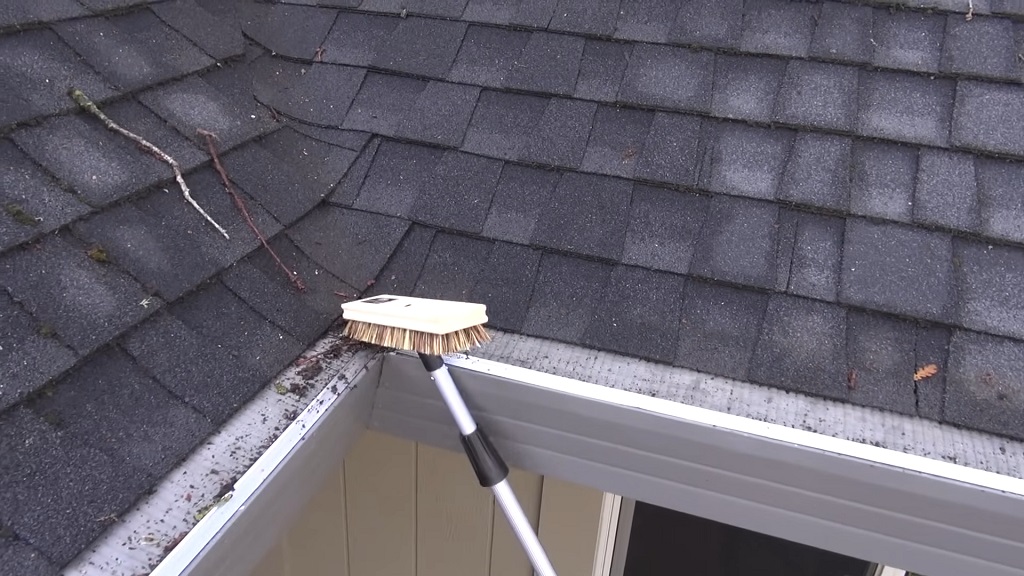
Covers and screens help, but they don’t eliminate the need for inspections. Needles, seeds, and shingle granules still accumulate.
IBHS specifically notes that debris on top of guards is just as flammable in wildfire zones. You may not need quarterly cleanings, but at least twice a year, you’ll want a check-up.
How Often Should Gutters Be Cleaned?
- Baseline: twice a year, spring and fall.
- After storms: inspect for blockages from wind-driven debris.
- Tree-heavy lots: homes under conifers or surrounded by tall deciduous trees may need quarterly checks.
Think of it the way pilots treat pre-flight checks. Routine, disciplined, and documented.
What a Quality Professional Service Looks Like
When evaluating a company, listen for clear explanations of process, not just “we clean gutters.” A reliable service includes:
- Safety assessment: soil stability, ladder placement, overhead clearance, and fragile roof identification.
- Containment: bagging debris, wetting droppings if present, following CDC-style hygiene protocols.
- System flush: testing outlets and downspouts with water to confirm clear flow.
- Inspection checklist: pitch, seams, hangers, and discharge distance.
- Report and photos: before-and-after documentation builds trust.
- Recommendations: simple add-ons like splash blocks or extensions to carry water 5-10 feet away from walls.
DIY vs Professional
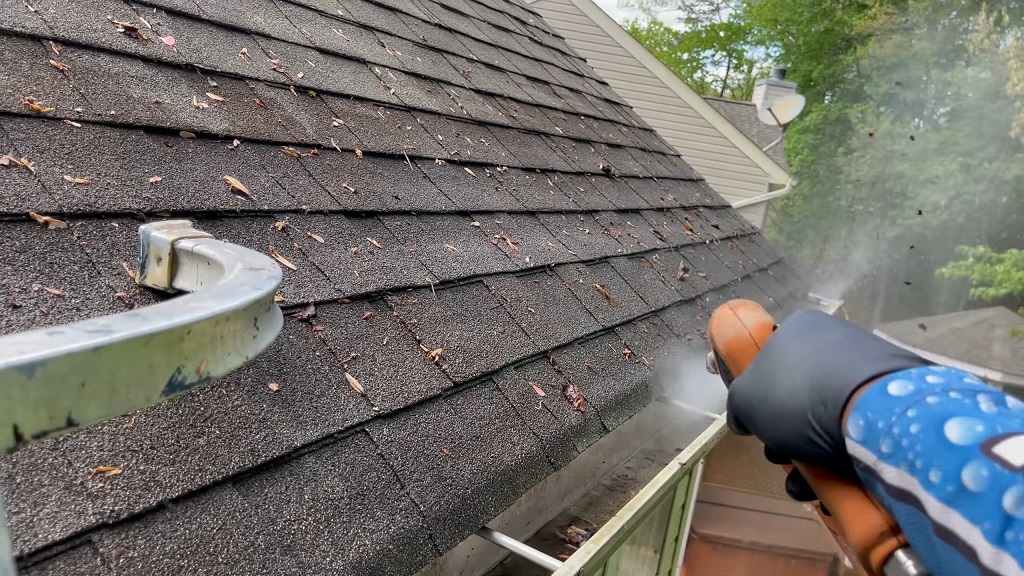
| Aspect | DIY Reality | Professional Advantage |
| Fall risk | High. Hundreds of deaths and thousands of injuries from ladder falls each year, many under 10 feet. | Trained crews, stabilizers, and safety practices dramatically lower risk. |
| Electrical hazards | Easy to get too close to overhead lines with ladders or tools. | Site planning and OSHA-style clearances are routine. |
| Biohazards | Exposure to droppings and spores without protection. | Wet methods, PPE, and safe disposal reduce health risks. |
| Hidden defects | Easy to miss sagging or bad slopes. | Systematic inspections catch problems early. |
| Long-term cost | One accident or leak can erase any savings. | Preventive care avoids the five-figure water damage claims FEMA warns about. |
Common Pushbacks From Homeowners
“I’m careful on ladders.”
Caution helps, but statistics show most ladder deaths happen from low heights during short jobs. Professionals don’t rely on caution; they rely on systems, training, and gear.
“I only clean once a year.”
Once annually isn’t enough for many homes. IBHS stresses twice yearly as a minimum, with extras after storms or in tree-heavy lots.
“My downspouts look fine.”
Water discharging two feet from your foundation is not fine. Five feet is the widely published minimum, and more is better on clay or slopes.
How to Choose the Right Company
- Ask about safety: listen for ladder stabilizers, fall prevention, and power line awareness.
- Request a checklist: pitch, seams, hanger condition, downspout distance.
- Expect documentation: photos and reports confirm the job.
- Check coverage: proper insurance and experience protect you and the crew.
- Book ahead: don’t wait until the first big storm of the season. Schedule proactively.
The Bottom Line
Gutters aren’t glamorous, but they’re one of the simplest lines of defense against water damage. Cleaning them may look like a quick weekend chore, but the risks of falls, electrical hazards, hidden mold, or fire are serious.
The data on ladder injuries, water damage claims, and home insurance losses all point in the same direction: professional service pays for itself many times over.
Hiring a trained crew means safer work, better inspections, and fewer surprise repairs. In the long run, a small service bill beats a soaked basement, a damaged roof, or a trip to the emergency room.

